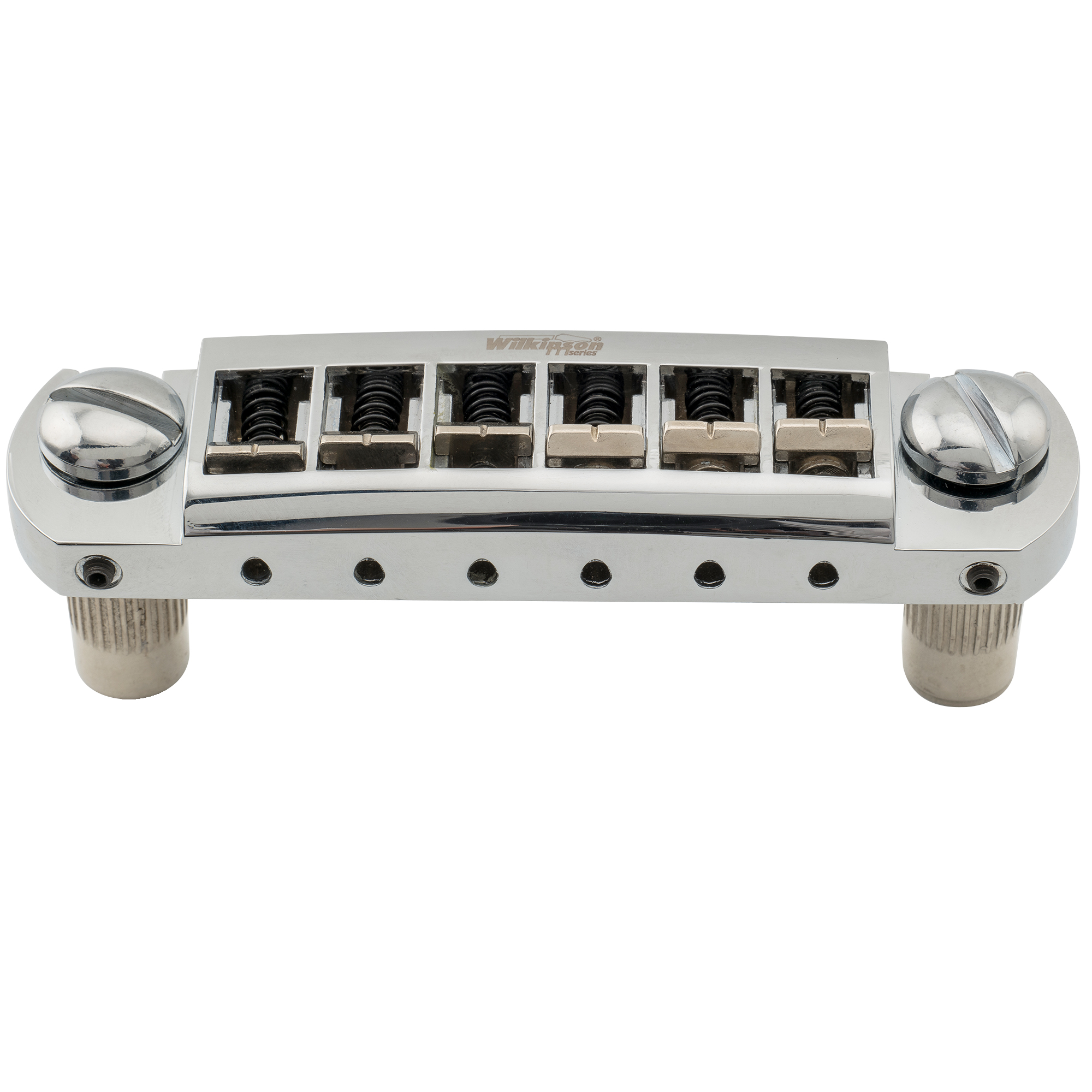

Thanks to the increased string break angle provided by the stop tailpiece, you also get fantastic overall tuning stability and the brilliant sustain the LP guitars are renowned for.

A Tune-o-Matic allows for very precise intonation of each string individually, getting you much closer to perfect tuning all across the fretboard. The Tune-o-Matic offers several advantages over the Wraparound with its more complex design. There are also some modern models of Wraparound bridge with individual saddles, although some purists may feel this goes against the whole point of having one! Tune-o-Matic Bridges - The Pros & Cons You will certainly be able to get close to perfection with this kind of bridge, but you may have to make some compromises at either end of the fretboard to get there. You can only adjust from each bridge post, which means that getting an exacting intonation for each string is not possible. However one of the major issues with the Wraparound design is the lack of flexibility when it comes to intonation. It's for this reason Gibson used the Wraparound bridge on a lot of it's beginner and entry level guitars, like the LP Jr and some SG's. It’s also very easy to change strings on a Wraparound thanks to its simple design requiring a simple thread through, and wrap-around of the strings. For some guitarists the feel of a Wraparound bridge is unmatched when it comes to the attack of the guitar's sound. This is because there are only two points at which the bridge is anchored to the body, resulting in minimal loss of string vibration. Wraparound bridges are much loved for their simple, easy to use design, as well as their increased sustain over other bridge designs. Now that we understand a little about the history of these two great bridges, let’s have a look at the pros and cons of each in terms of performance. The Tune-o-Matic now comes as standard on the vast majority of Gibson guitars and derivative designs have found their way onto many other major guitar brands, testament to its simple yet effective design. Keeping some of the qualities of the original Wraparound, the idea behind its construction was to make the distance adjustable for all strings with individual saddles, whilst simultaneously creating a better break angle for the strings with the addition of the stop bar tailpiece. The Tune-o-Matic was created as a direct replacement to the Wraparound bridge, first appearing on the Gibson Super 400 guitar in 1953 before appearing on the Les Paul Custom the year following. As one of the earliest guitar bridge designs, simplicity is its forte, which is probably why they’re still around today - more on which later. Featuring a slightly contoured bar to match the radius of the neck, the Wraparound bridge has ‘U’ shaped slots at either end that mount steel bolts threaded into the body of the guitar itself.

The Wraparound bridge was introduced by Gibson in 1953 and was designed to replace the Trapeze bridge that was considered by many to be an inefficient design. But what are the differences between the two? Why do some guitarists swear by an older and arguably less efficient design? In this article we’re going to detail the ins and outs of these two types of brilliant bridges to find the answer… Wraparound Bridges The cheapest I've found is the Leo Quan type, which run about $25.There are various pros and cons of both the Tune-o-Matic and Wraparound bridge designs you’ll often see adorning LP and SG-style guitars.
#Gibson wraparound bridge mac
You can fill the post holes with doweling and redrill, or you can buy an all-in-one intonatable wraparound bridge from Stew Mac (or a hunert other places). Asian TOM bridges are 72mm center-to-center so will not work with the wraparound post holes. Currently, Asian wraparound bridge post holes are 82mm center-to-center.


 0 kommentar(er)
0 kommentar(er)
